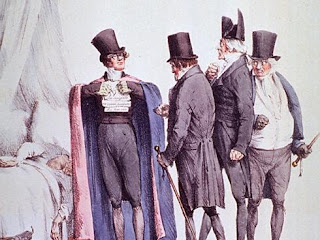Being selected as an editor or associate editor of a scientific and academic journal is exciting. It gives you power to decide which paper should be published. The main respossibilities are
- To decide which papers meet the criteria for scientific excellence and relevance for the community the journal serves
- To seek out exciting new areas for publication; identify and solicit thought-provoking and controversial papers
- To assure that all submitted manuscripts receive prompt, critical evaluation, and meet or better timeliness goals
To authors, an editor should look at
However as editor, are they allow to publish his own paper in his journal?
But with this power, and Edito can have hidden responsibilities:
Editors may artificially increase their journal’s IF by
(1) Coercive citation: facilitating or even demanding self-citation
(2) increasing editorials with citations,
(3) limiting the total number of articles and/or the number of original papers and increasing the number of review and/or technical articles that are more likely to be
(4) prerelease or timing of publication early during a year thus allowing more time for citation for a given year
The World Journal of Gastroenterology in 2000, the journal received its first impact factor, 0.993. The next year, in 2001, it increased to 1.445.
In 2002, It increased again to 2.532 and In 2003 to 3.318.
96% of citations contributing to Cereal Research Communications‘ impact factor in 2007 were self-citations.
The IF Algorithm: The number of times items published in Nature during 2006-2007 were cited in journals during 2008 divided by The number of ‘citable’ articles published in Nature in 2006 and 2007 (substantive items, primary research articles, reviews)
Thus a journal publishing lots of ‘non-citable’ items can achieve a higher IF than journals that predominantly publish ‘citable’items = More Editorials!
Editorials are great as:
Exempt from peer review, an editor is able to cite many articles from one’s own journal and have it published quickly and without delay.
As an example
“The NHJ 2012 in retrospect: which articles are cited most?” by E.E. Van der Wall, editor of the Netherlands Heart Journal. Published in December 2012, the brief editorial contains 25 self-citations to the NHJ, 24 of which cite articles written between 2010 and 2011 — the window from which the journal’s next impact factor will be calculated.
Some editors used their journal as a personal vehicle for dissemination and promotion of their own work. In the December 2008 issue of Chaos, Solitons & Fractals, Five of the articles are written by the editor, Mohamed El Naschie. In 2008, El Naschiewrote 60 papers in the journal. El Naschie has written nearly 300 articles in the journal since its inception.
Of the 31 papers not written by El Naschie in the an issue of Chaos, Solitons and Fractals, at least 11 are related to his theories and include 58 citations of his work in the journal.
The International Journal of Nonlinear Science and Numerical Simulation (IJNSNS), founded in 2000 by Ji Huan-He. In 2008 IJNSNS had an impact factor of 8.91
Ji-Huan He, the founder and editor-in-chief of IJNSNS, is also an editor of another journal Chaos Solitons and Fractals (CSF). Both He and El Naschie publish a lot, not only in their own journals but also in each other’s, and they cite each other frequently.
The top-citing author to IJNSNS in 2008 was the journal’s own editor-in-chief, Ji-Huan He, who cited the journal 243 times. The three editors of the journal account for 29% of the citations counted toward the impact factor.
Editorial feedback to corresponding authors can request the authors to include self-citations. Citation coercion has been experienced by about 20% of academic authors, and younger faculty are more likely to succumb when editors or publishers“request” more journal citations. While the vast majority of respondents (86%) viewed citation coercion as inappropriate behavior, more than half (57%) indicated that they would consent to the request.
Becoming editor or guest editor of a journal can give a power
“you cite my article only once in your 40 references. Consequently, I kindly ask you to add references of my articles to your present article”.
As an example the IEEE OSA Journal of Display Technology, Special Issue Volume 9, Issue 4 (April 2013). Recent advances in solid state lighting with Guest Editor: Nelson Tansu
All 17 papers in the same Special Issue have 6-10 citations to Tansu, and all papers are from China, Taiwan and Singapore. A single special issue = 160 citations to Tansu. Being a Journal Editor, Tansu made it as a personal vehicle for promotion of their own work and increasing citation. Read more at http://www.booksie.com/editorial_and_opinion/article/rohwani/coercive-citation-in-asian-authors#MfrsCWu2Euoh7Uu2.99
In conclusion Editor position can be abused with aims
To increase journal’s impact factor, to increase Editor’s own publications, to increase Editor’s own citations and h index
“I wish you all a nice, productive, and citable 2013.”



No comments:
Post a Comment